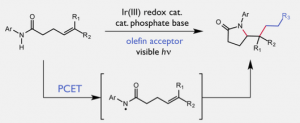 By Joe Rojas-Burke, University of Utah, and Morgan Kelly, Princeton University
By Joe Rojas-Burke, University of Utah, and Morgan Kelly, Princeton University
In the virtual world of climate modeling, forests and other vegetation are assumed to quickly bounce back from extreme drought and resume their integral role in removing carbon dioxide from Earth’s atmosphere. Unfortunately, that assumption may be far off the mark, according to a new Princeton University-based study published in the journal Science.
An analysis of drought impacts at forest sites worldwide found that living trees took an average of two to four years to recover and resume normal growth rates — and thus carbon-dioxide absorption — after a drought ended, the researchers report. Forests help mitigate human-induced climate change by removing massive amounts of carbon-dioxide emissions from the atmosphere and incorporating the carbon into woody tissues.
The finding that drought stress sets back tree growth for years suggests that Earth’s forests are capable of storing less carbon than climate models have calculated, said lead author William Anderegg, a visiting associate research scholar in the Princeton Environmental Institute.
“This really matters because future droughts are expected to increase in frequency and severity due to climate change,” said Anderegg, who will start as an assistant professor of biology at the University of Utah in Aug. 2016. “Some forests could be in a race to recover before the next drought strikes. If forests are not as good at taking up carbon dioxide, this means climate change could speed up.”
Anderegg and colleagues measured the recovery of tree-stem growth after severe droughts at more than 1,300 forest sites around the world using records kept since 1948 by the International Tree Ring Data Bank. Tree rings provide a history of wood growth as well as carbon uptake from the surrounding ecosystem. They found that a few forests exhibited growth that was higher than predicted after drought, most prominently in parts of California and the Mediterranean.
In the majority of the world’s forests, however, trunk growth took two to four years on average to return to normal. Growth was about 9 percent slower than expected during the first year of recovery, and remained 5 percent slower in the second year. Long-lasting effects of drought were most prevalent in dry ecosystems, and among pines and tree species with low hydraulic safety margins, meaning these trees tend to keep using water at a high rate even as drought progresses, Anderegg said.
How drought causes such long-lasting harm remains unknown, but the researchers offered three possible answers: Loss of foliage and carbohydrate reserves during drought may impair growth in subsequent years; pests and diseases may accumulate in drought-stressed trees; or lasting damage to vascular tissues could impair water transport.
The researchers calculated that if a forest experiences a delayed recovery from drought, the carbon-storage capacity in semi-arid ecosystems alone would drop by about 1.6 metric gigatons over a century — an amount equal to about 25 percent of the total energy-related carbon emissions produced by the United States in a year. Yet, current climate models do not account for this massive carbon remnant of drought, Anderegg said.
“In most of our current models of ecosystems and climate, drought effects on forests switch on and off like a light,” Anderegg said. “When drought conditions go away, the models assume a forest’s recovery is complete and close to immediate. That’s not how the real world works.”
Droughts that include high temperatures—as opposed to only low precipitation—are a documented scourge to tree growth and health, Anderegg said. During the 2000-2003 drought in the American Southwest, for instance, the decrease in precipitation was comparable to earlier droughts, but the temperature was hotter than the long-term average by 3 to 6 degrees Fahrenheit.
“The higher temperatures really seemed to make the drought lethal to vegetation where previous droughts with the same rainfall deficit weren’t,” Anderegg said.
“Drought, especially the type that matters to forests, is about the balance between precipitation and evaporation, and evaporation is very strongly linked to temperature,” he said. “The fact that temperatures are going up suggests quite strongly that the western regions of the United States are going to have more frequent and more severe droughts, which would substantially reduce forests’ ability to pull carbon from the atmosphere.”
Anderegg co-authored the study with Princeton colleagues Stephen Pacala, the Frederick D. Petrie Professor in Ecology and Evolutionary Biology; Adam Wolf, an associate research scholar in ecology and evolutionary biology; and Elena Shevliakova, a senior climate modeler in ecology and evolutionary biology and in the National Oceanic and Atmospheric Administration’s (NOAA) Geophysical Fluid Dynamics Laboratory (GFDL) located on Princeton’s Forrestal Campus.
The research also included collaborators from Northern Arizona University, University of Nevada–Reno, Pyrenean Institute Of Ecology, University of New Mexico, Arizona State University, the U.S. Forest Service Rocky Mountain Research Station, and the Lamont-Doherty Earth Observatory of Columbia University.
The research was funded by the National Science Foundation (grant number DEB EF-1340270) and the NOAA Climate and Global Change Postdoctoral Fellowship program.



You must be logged in to post a comment.